Abstract
OBJECTIVE: To describe the establishment and outcomes of a regional programme of continuing long term surveillance of antibiotic susceptibility of Neisseria gonorrhoeae over the period 1992-4. METHODS: Laboratories in 17 countries in the WHO Western Pacific Region participated in a continuing programme of surveillance of the susceptibility of gonococci to an agreed group of antibiotics over 3 years. Established techniques were used and these included quality control and proficiency testing systems. RESULTS: About 20,000 gonococci were examined over a 3 year period. Resistance to the penicillins through beta lactamase production or chromosomal mechanisms was widespread, with further changes evident over the 3 years. Spectinomycin resistance was infrequently encountered but high level tetracycline resistance was present in most participating centres, with some having high proportions of tetracycline resistant organisms. Quinolone resistance increased and became widespread throughout the region in the 3 years, ultimately involving all but one centre. Both the number and minimum inhibitory concentrations of quinolone resistant isolates increased markedly. CONCLUSIONS: Patterns of gonococcal resistance to antibiotics continue to evolve, at times rapidly, and have the potential for wide and rapid dissemination. Regional surveillance programmes can be developed by using and expanding existing resources. Data thus derived were applied to the development of appropriate treatment regimens in the region, and emphasised further the need for a global expansion of the programme of integrated surveillance of gonococcal resistance.
Full text
PDF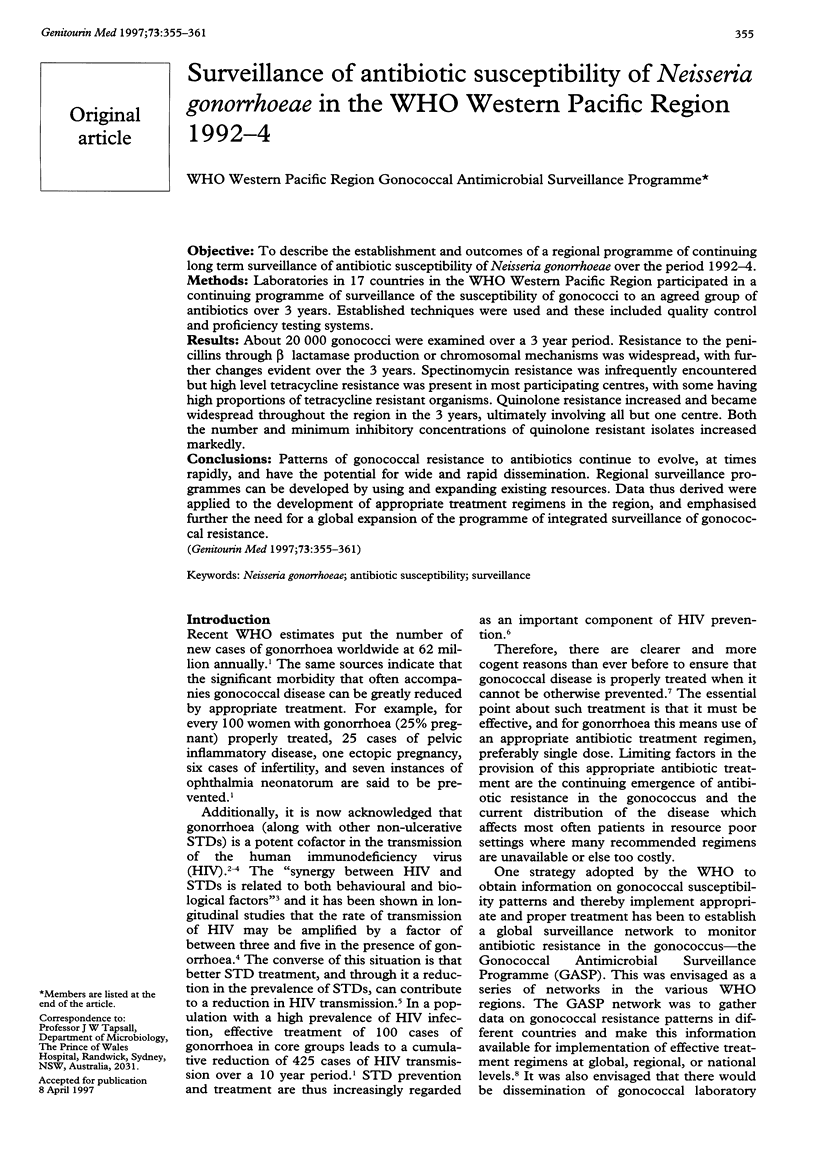
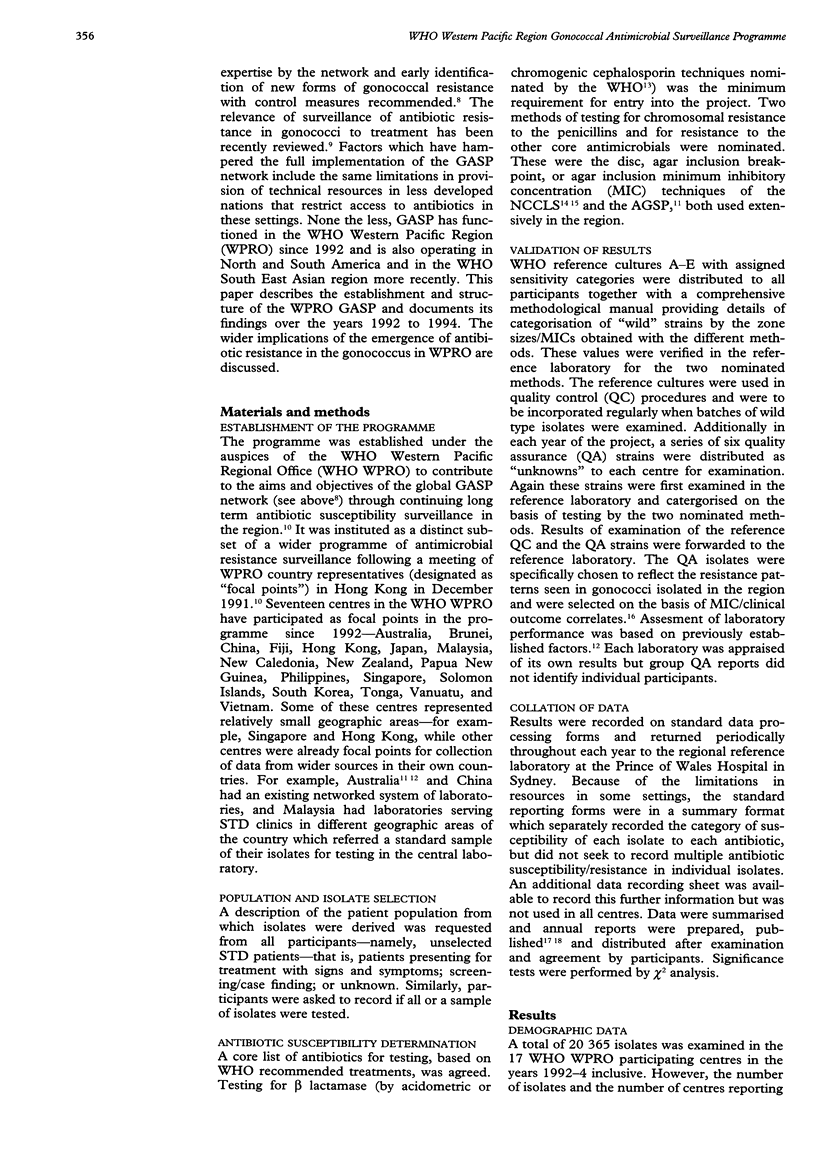
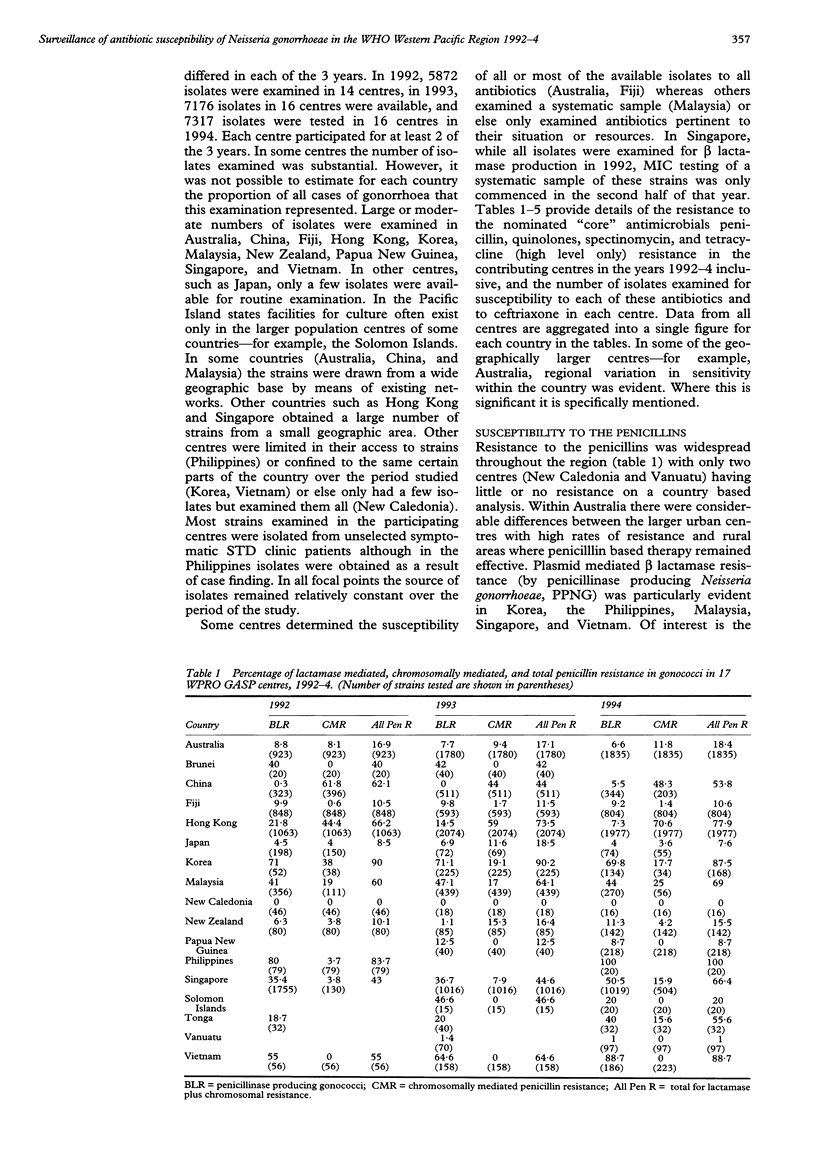
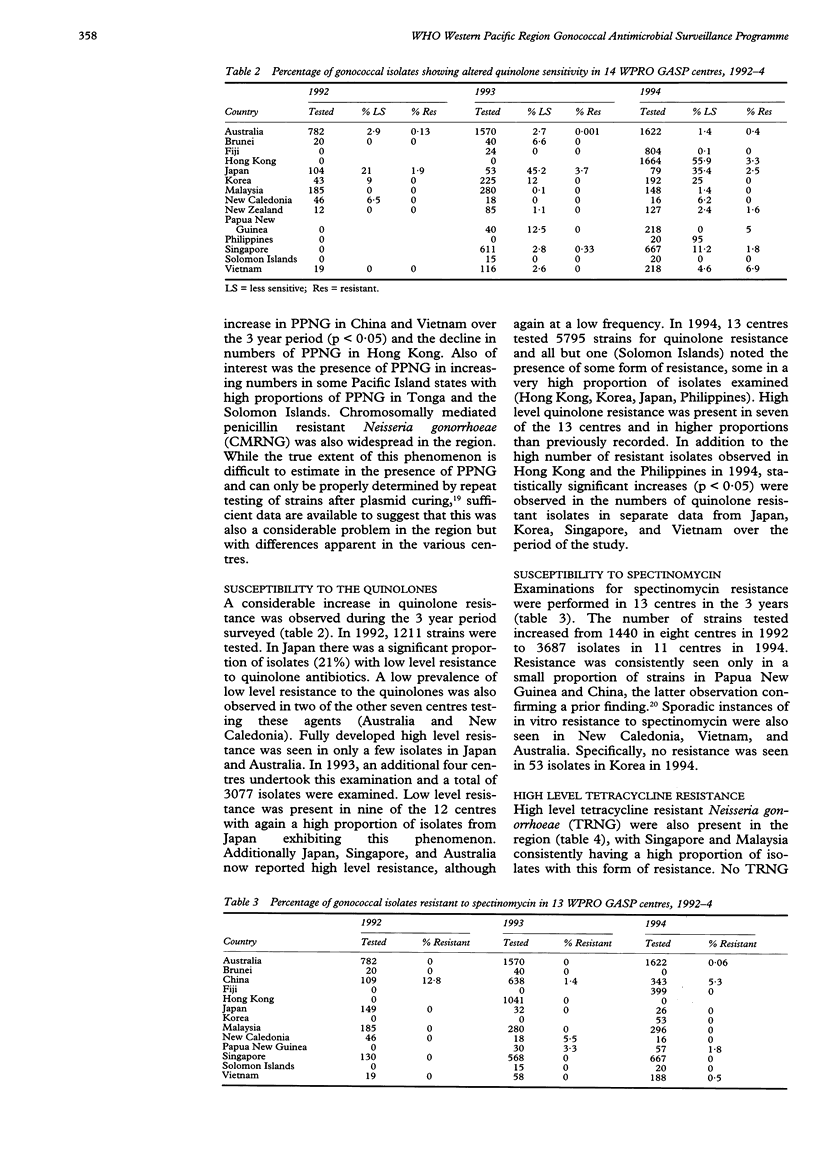

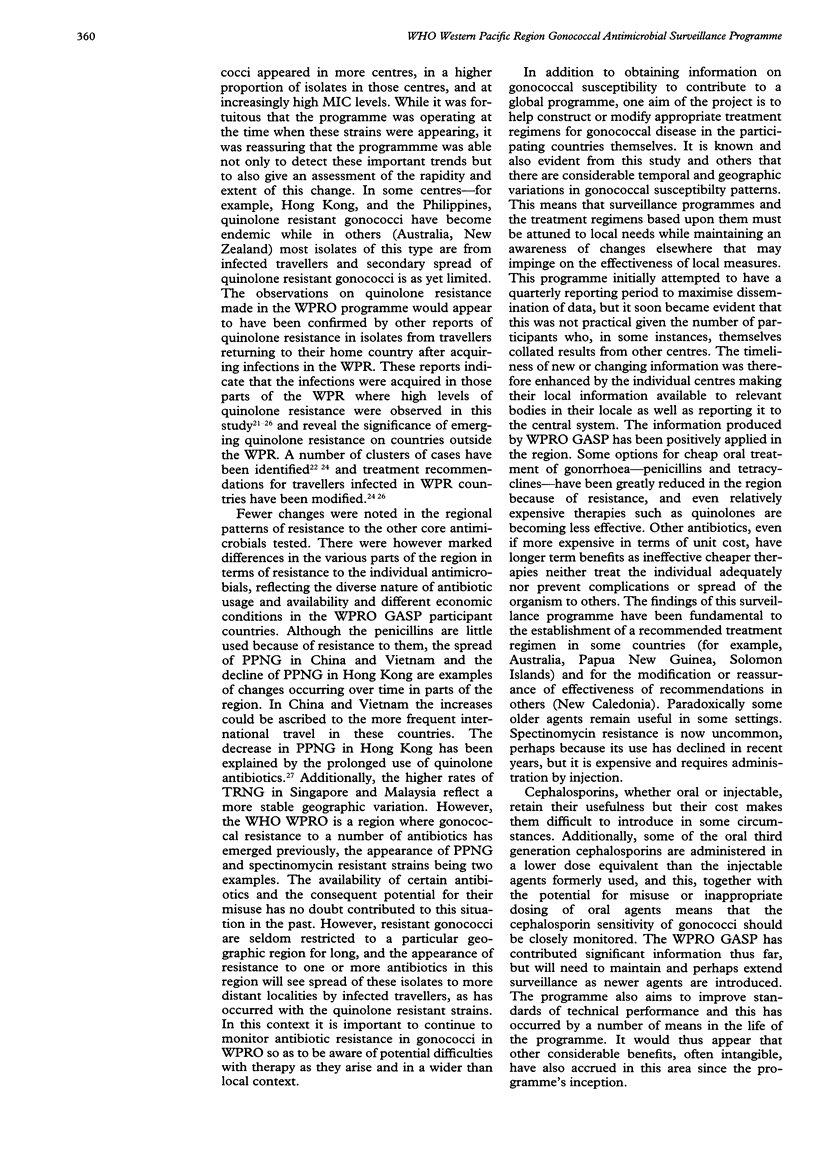
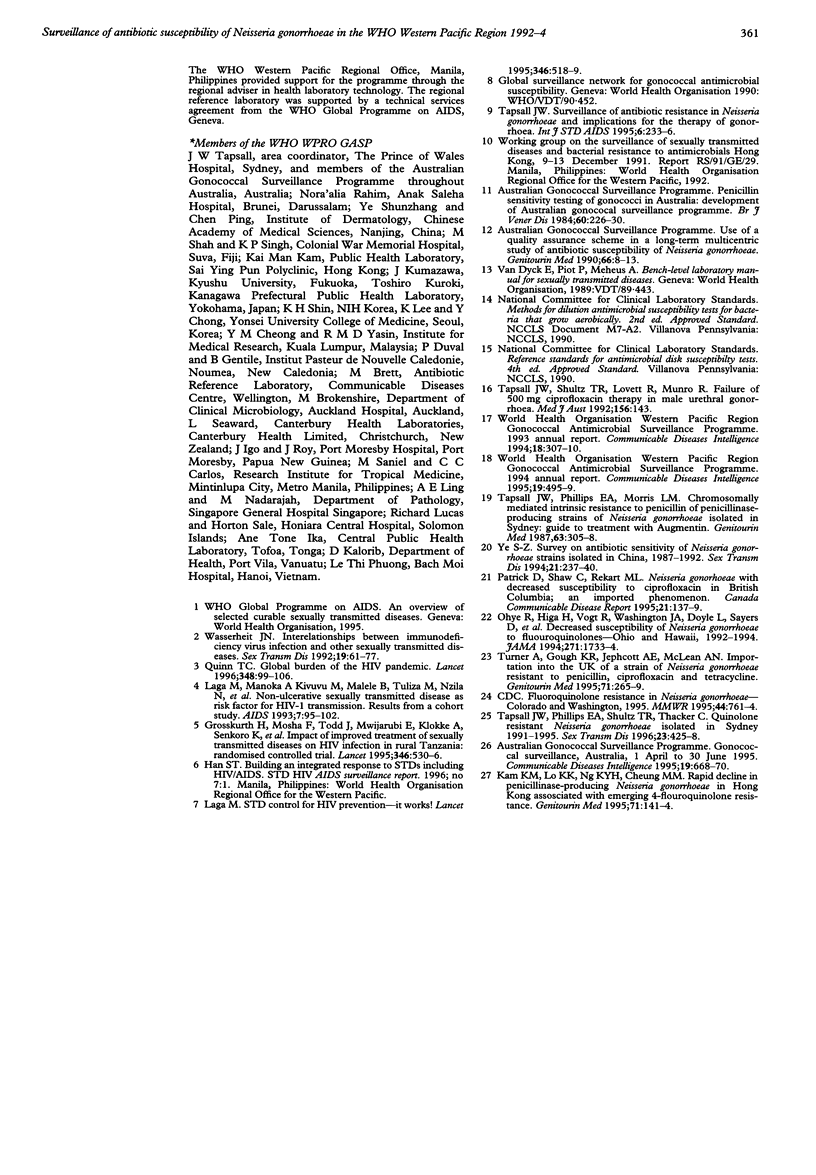
Selected References
These references are in PubMed. This may not be the complete list of references from this article.
- From the Centers for Disease Control and Prevention. Decreased susceptibility of Neisseria gonorrhoeae to fluoroquinolones--Ohio and Hawaii, 1992-1994. JAMA. 1994 Jun 8;271(22):1733–1734. [PubMed] [Google Scholar]
- Grosskurth H., Mosha F., Todd J., Mwijarubi E., Klokke A., Senkoro K., Mayaud P., Changalucha J., Nicoll A., ka-Gina G. Impact of improved treatment of sexually transmitted diseases on HIV infection in rural Tanzania: randomised controlled trial. Lancet. 1995 Aug 26;346(8974):530–536. doi: 10.1016/s0140-6736(95)91380-7. [DOI] [PubMed] [Google Scholar]
- Kam K. M., Lo K. K., Ho N. K., Cheung M. M. Rapid decline in penicillinase-producing Neisseria gonorrhoeae in Hong Kong associated with emerging 4-fluoroquinolone resistance. Genitourin Med. 1995 Jun;71(3):141–144. doi: 10.1136/sti.71.3.141. [DOI] [PMC free article] [PubMed] [Google Scholar]
- Laga M., Manoka A., Kivuvu M., Malele B., Tuliza M., Nzila N., Goeman J., Behets F., Batter V., Alary M. Non-ulcerative sexually transmitted diseases as risk factors for HIV-1 transmission in women: results from a cohort study. AIDS. 1993 Jan;7(1):95–102. doi: 10.1097/00002030-199301000-00015. [DOI] [PubMed] [Google Scholar]
- Laga M. STD control for HIV prevention--it works! Lancet. 1995 Aug 26;346(8974):518–519. doi: 10.1016/s0140-6736(95)91374-2. [DOI] [PubMed] [Google Scholar]
- Patrick D., Shaw C., Rekart M. L. Neisseria gonorrhoeae with decreased susceptibility to ciprofloxacin in British Columbia: an imported phenomenon. Can Commun Dis Rep. 1995 Aug 15;21(15):137–139. [PubMed] [Google Scholar]
- Quinn T. C. Global burden of the HIV pandemic. Lancet. 1996 Jul 13;348(9020):99–106. doi: 10.1016/s0140-6736(96)01029-x. [DOI] [PubMed] [Google Scholar]
- Tapsall J. W., Phillips E. A., Morris L. M. Chromosomally mediated intrinsic resistance to penicillin of penicillinase producing strains of Neisseria gonorrhoeae isolated in Sydney: guide to treatment with Augmentin. Genitourin Med. 1987 Oct;63(5):305–308. doi: 10.1136/sti.63.5.305. [DOI] [PMC free article] [PubMed] [Google Scholar]
- Tapsall J. W., Phillips E. A., Shultz T. R., Thacker C. Quinolone-resistant Neisseria gonorrhoeae isolated in Sydney, Australia, 1991 to 1995. Sex Transm Dis. 1996 Sep-Oct;23(5):425–428. doi: 10.1097/00007435-199609000-00014. [DOI] [PubMed] [Google Scholar]
- Tapsall J. W., Shultz T. R., Lovett R., Munro R. Failure of 500 mg ciprofloxacin therapy in male urethral gonorrhoea. Med J Aust. 1992 Jan 20;156(2):143–143. doi: 10.5694/j.1326-5377.1992.tb126457.x. [DOI] [PubMed] [Google Scholar]
- Tapsall J. W. Surveillance of antibiotic resistance in Neisseria gonorrhoeae and implications for the therapy of gonorrhoea. Int J STD AIDS. 1995 Jul-Aug;6(4):233–236. doi: 10.1177/095646249500600402. [DOI] [PubMed] [Google Scholar]
- Turner A., Gough K. R., Jephcott A. E., McClean A. N. Importation into the UK of a strain of Neisseria gonorrhoeae resistant to penicillin, ciprofloxacin and tetracycline. Genitourin Med. 1995 Aug;71(4):265–266. doi: 10.1136/sti.71.4.265-a. [DOI] [PMC free article] [PubMed] [Google Scholar]
- Wasserheit J. N. Epidemiological synergy. Interrelationships between human immunodeficiency virus infection and other sexually transmitted diseases. Sex Transm Dis. 1992 Mar-Apr;19(2):61–77. [PubMed] [Google Scholar]
- Ye S. Z. Survey on antibiotic sensitivity of Neisseria gonorrhoeae strains isolated in China, 1987-1992. Sex Transm Dis. 1994 Jul-Aug;21(4):237–240. [PubMed] [Google Scholar]


